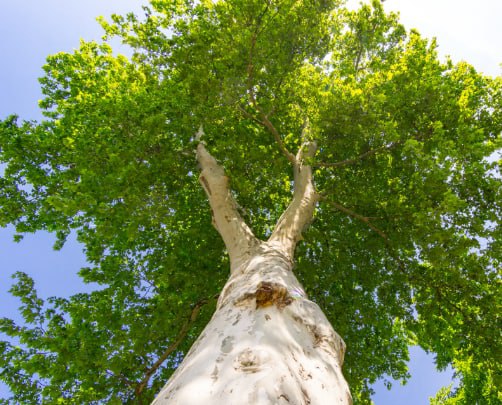Introduction: Tree crown reduction is an essential arboricultural practice that involves carefully pruning a tree’s canopy to reduce its overall size while maintaining its natural shape. This technique is gaining popularity among tree owners due to its numerous benefits for both trees and the surrounding environment. In this blog post, we will delve into the fundamentals of tree crown reduction and explore its various advantages.

- What is Tree Crown Reduction?
Tree crown reduction is a specialised pruning method aimed at reducing the height and spread of a tree’s canopy. Arborists carefully select and remove specific branches, maintaining the tree’s natural form while reducing its overall size. This technique requires skill, experience, and knowledge of tree biology to ensure the tree’s health and long-term stability. - The Goals of Tree Crown Reduction:
Tree crown reduction serves several essential purposes, including a. Managing tree size in confined spaces: In urban areas, large trees can outgrow their surroundings, causing potential hazards or interference with buildings and powerlines. b. Mitigating safety risks: Crown reduction can address weak or hazardous branches, reducing the risk of falling limbs during storms or high winds. c. Enhancing tree health: By selectively pruning branches, the tree can allocate its resources more efficiently, promoting healthy growth and reducing stress on the tree. d. Aesthetic improvements: Crown reduction can enhance the tree’s appearance, making it a more appealing focal point in the landscape. - The Pruning Process:
Tree crown reduction is a delicate procedure that should only be performed by certified and experienced tree surgeons. The process involves the following steps: a. Evaluation: A professional arborist assesses the tree’s health, structure, and surrounding environment to determine the most suitable approach. b. Selective pruning: The arborist carefully chooses which branches to remove, considering their size, location, and potential impact on the tree’s overall structure. c. Proper cuts: Correct pruning cuts are crucial to promote healing and prevent the risk of decay or infection. d. Post-reduction care: The tree may require additional care to ensure its health and recovery after the crown reduction. - Benefits of Tree Crown Reduction:
a. Improved safety: By removing weak or diseased branches, the risk of falling limbs is significantly reduced, making the area around the tree safer.
b. Enhanced aesthetics: Crown reduction can give the tree a more balanced and pleasing shape, improving its appearance and contributing to the overall landscape.
c. Better light penetration: Pruning dense canopies allows more sunlight to reach the lower parts of the tree and the surrounding landscape, benefiting other plants and grasses.
d. Sustained tree health: By reducing the overall size, the tree can allocate its resources more efficiently, promoting healthier growth and longevity.
Conclusion: Tree crown reduction is a valuable technique that can benefit both trees and property owners. When properly executed by qualified tree surgeons, this practice ensures trees’ safety, health, and aesthetic appeal in various environments. If you are considering tree crown reduction for your trees, be sure to consult a professional arborist to determine the best approach for your specific needs.
Call us on 01892352898 or click here to complete our contact form and see how we can help with your tree’s needs.